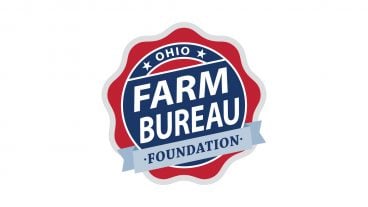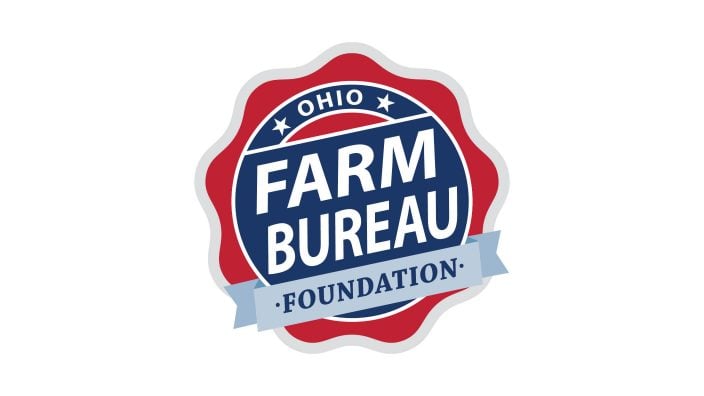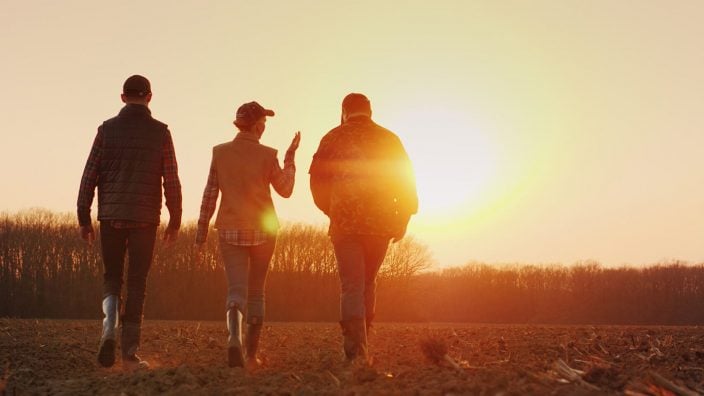Applications for Ohio Farm Bureau Health Plans now available
Members have three ways to apply: contacting a certified agent, calling 833-468-4280 or visiting ohiofarmbureauhealthplans.org.
Read MoreNo garden is without weeds. A weed is simply any plant that is growing and unwanted; for example, grass in the lawn is lovely but grass in the garden bed is a weed. Sometimes seeds from wanted plants will spread and the seedlings will appear elsewhere in the garden and become weeds. Plants are sometimes dubbed “garden volunteers” instead of “weeds” if they happen to be a welcomed surprise.
Annual weeds
Consider weeds as you would any other plant. Annual weeds have a life cycle of a year or less. Some annual weeds include crabgrass, common chickweed, lamb’s quarters, common ragweed, prostrate knotweed, purslane, henbit, and prickly lettuce. One way to control the spread of these annual weeds is by hand-pulling and cultivation. Another effective technique is the use of a pre-emergent herbicide like Preen®. Pre-emergent herbicides interrupt seed germination by keeping seedlings from emerging and growing. Crabgrass control, a commonly used pre-emergent, is applied in the spring because crabgrass germination is related to soil temperature. When using pre-emergents, besides reading and following the directions, it is important to not break the garden’s surface by pulling other weeds and to not plant anything else in the area that has been treated with the pre-emergent.
Biennial weeds
As opposed to annual weeds, biennial weeds grow roots and basal rosette leaves the first year, then flower and set seeds in the second year. This list includes wild carrot, wild parsnip, teasel, and common burdock. In the first year when they have only leaves, these weeds look rather interesting, but they must be removed from the garden before they flower and set seed. These can be pulled or hoed away or can be controlled with a pre-emergent or post-emergent herbicide. Post-emergent herbicides can be chemical products such as Roundup® or an environmentally safe, non-chemical like vinegar, and are applied to kill the weeds after they are up and growing. There are two types of post-emergent herbicides, selective and non-selective. The selective post-emergent, as the name indicates, only affects specific weeds, so consult the label to determine if it will control broad leaf plants (seen most of the time for the lawn) or grasses. Be cautious because broad leaf herbicides can severely damage wanted plants such as perennials, trees, and shrubs. A non-selective, post-emergent herbicide will kill all kinds of plants, both the wanted and the unwanted-only you, the applicator, can tell the difference. Always read and follow the label directions.
Perennial weeds
Perennial weeds are the toughest to get rid of as they can spread four different ways: seeds, stem cuttings, roots, and spreading stolons. The plant itself is there year after year, growing bigger and spreading. Perennial weeds include yellow nutsedge, Johnson grass, wild garlic, dandelions, stinging nettle, red sorrel, broadleaf dock, common pokeweed, ground ivy, and Canada thistle. Poison ivy is also lumped into this category, but due to the woody vine stem is also considered a woody perennial weed. Perennial weeds live for more than two years. They are best controlled by non-selective herbicides, including vinegar. For best control, spray in the spring when plants are young and tender or in the fall when plants are building up a food store in the roots for the winter. On extremely tough problematic weeds like thistles and poison ivy, it would be advisable to spray them weekly as each spray weakens the plant more until finally it dies.
Weed Suppression Alternatives
Organic mulch eliminates weeds without the use of chemicals while adding organic material to the soil. Mulch blocks weeds’ access to light and air, slowing their growth. Newspaper can also be used. First place a few layers down and then cover the paper with a two-inch layer of mulch. The newspaper not only suppresses the weeds but permits water to enter the soil, and eventually decomposes-another green alternative. Black plastic should only be used for a couple of months because though it smothers the weeds underneath, it doesn’t allow the soil to properly exchange moisture and air. Landscape fabric also stifles weeds, but allows water to be absorbed into the soil and is a more green option. Be aware that after a number of years weeds will be able to root into the decomposing top layer of mulch.
Pulling weeds in the garden, another environmentally friendly method, can actually be meditative. You can listen to the sounds of the garden, be it the birds, bees, the plants, or the neighborhood, and reconnect with the earth, thereby gaining a better understanding of your garden. After a couple of weeks the weeds become fewer and the garden becomes more beautiful. Remember to pull the weeds before they go to seed and not to get discouraged. Don’t let them win! Be vigilant with garden care, and in the end you will succeed.
Barbara Arnold is green corps coordinator at Franklin Park Conservatory.
How much vinegar?
Be careful as this is a nonselective herbicide and will kill any plant it touches (just like Round-up).


Members have three ways to apply: contacting a certified agent, calling 833-468-4280 or visiting ohiofarmbureauhealthplans.org.
Read More

The scholarship provides one renewable award of $10,000, supporting a student pursuing a degree in agriculture or an agriculture-related field.
Read More

A short conversation over the phone, a quick text message or even finding a small daily habit such as journaling can make a big difference.
Read More

One of the best decisions Shannon and Heather Utter made a few years ago was looking into a Farm Bureau member benefit that has ended up saving them thousands of dollars on their energy bills.
Read More

Ryan Hiser has experienced first-hand the importance of having the opportunity to vote on issues that will affect his family operation and other farmers.
Read More

Bill Patterson, Cy Prettyman and Adele Flynn will continue to serve as officers for Ohio Farm Bureau Federation.
Read More

Delegates discussed many topics impacting agriculture including farmland preservation, local foods, and succession planning.
Read More

Twenty-six farmers govern the state’s largest farm and food organization.
Read More

The 2025 recipients are Fred Cooke (posthumous) of Richland County, Marvin Dietsch of Williams County, Steven Knollman of Hamilton County and Michele Miller (posthumous) of Ottawa County.
Read More

Nathan and Jill Parriman grow seasonal crops, including Christmas trees, pumpkins and cut flowers, providing U-cut experiences that invite customers to engage directly with agriculture.
Read More